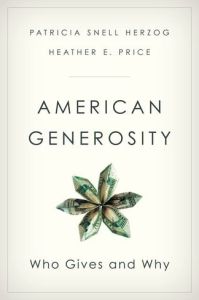Join getAbstract to access the summary!

Join getAbstract to access the summary!
Patricia Snell Herzog and Heather E. Price
American Generosity
Who Gives and Why
Oxford UP, 2016
What's inside?
Report breaks new ground on American giving habits.
Recommendation
Researchers Patricia Snell Herzog and Heather E. Price break new ground in this report on American giving habits. Their analysis, based on comprehensive 2010 findings from the Science of Generosity Initiative, includes the large dynamics and small nuances that influence individual giving patterns. Herzog and Price make their academic source material accessible by referring to a dozen individual case studies that represent a cross-section of Americans. You’ll learn why wealthy people are not necessarily the most generous, and why some people donate time instead of money. Herzog and Price also offer simple suggestions for increasing generosity in your life. getAbstract recommends their analysis to academic, philanthropic and nonprofit organization professionals, as well as to readers curious about “who gives and why.”
Summary
About the Authors
Co-investigator on the Science of Generosity Initiative Patricia Snell Herzog is an assistant professor in the Department of Sociology and Criminal Justice at the University of Arkansas. Heather E. Price is a co-investigator on the Science of Generosity Phase II.
















Comment on this summary